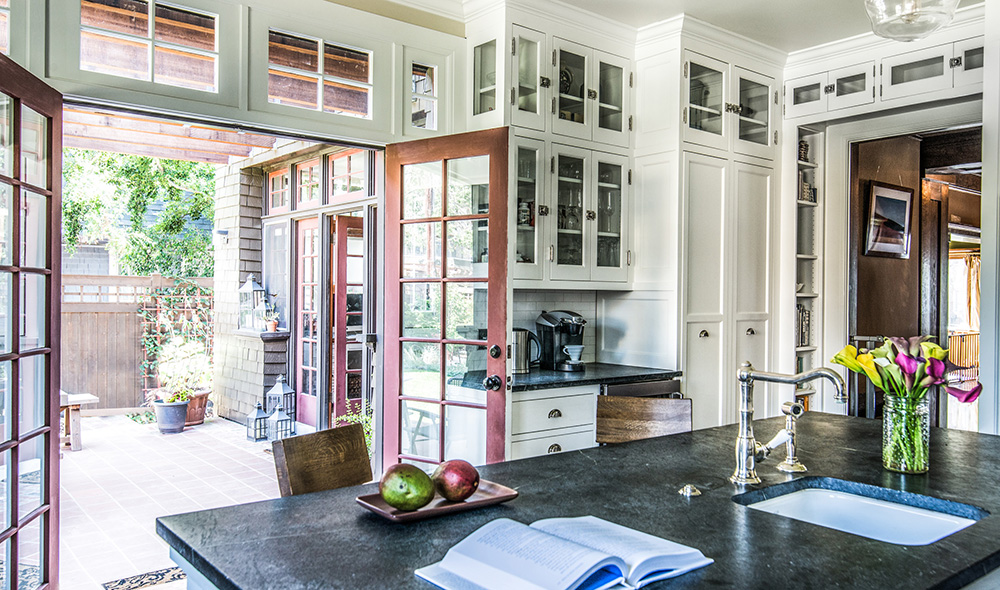Residential construction looks to the future of sustainable living in L.A.
Written by Wendy Bowman | Photography courtesy of Cris Nolasco
Incorporating sustainable design features into residential construction has been a widely accepted concept in L.A. for a considerable period. Numerous types of homes have been built to take advantage of site and orientation, thereby offering passive energy solutions for comfort and relief from the cold, sun, rain and heat.
Think the thick, insulated walls of the Spanish Colonial Revival style, and the large roof and attic spaces of the Craftsman with naturally ventilating gable ends. The question now, according to designer Steve Pallrand of Home Front Build, is how to move green building forward.
“What we encourage our clients to do is to return to the historic practices that existed before the invention of mechanical heating and cooling as a starting point,” says Pallrand, founder and principal of Home Front Build, which specializes in historically sensitive renovations and designs.
“Our goal is to help the homeowner increase comfort, while reducing the need to turn something on, because once you flip the switch, you are using resources.”
For decades, Home Front Build has encouraged homeowners to adapt, rather than to tear down, existing structures.
“The greenest homeowners are the ones who take an existing home and insulate it,” says Pallrand.
“Not only are these owners preserving the rich architectural fabric of Los Angeles, but they are significantly reducing the amount of new carbon emissions that go into the atmosphere through the production of new building materials.”
Home Front Build’s goal is to incorporate passive features that allow homeowners to delay or reduce energy use. These environmentally friendly designs rely heavily on insulation, dual-pane glazing and LED lighting.
The sizing, design and performance of heating and cooling systems also is important, as this represents the largest single area of energy use in the lifetime operation of a home, says Pallrand, adding, “It is these less sexy, and less discussed, systems and solutions where the greatest benefit can be realized.”
Among the firm’s methods: adapting high-tech systems that lower energy use—such as programmable and remotely addressable thermostats—to respond to green goals like lowering the shades to reduce energy use when the sun filters in during the summer; combining modern solar panels with the thick stucco walls of Spanish Revival homes to maintain a cool interior, while reducing the need for mechanical cooling; and repurposing old building materials salvaged during demolitions to add character to new construction without the associated waste of new building materials.
Meanwhile, another avenue involves adapting materials and systems designed for commercial projects for residential use. This includes using roofing material that doesn’t add much cost and reduces the need for cooling, along with heating and cooling systems that pull in outside air to cool or heat rather than using energy.
“The operational cost savings to using green design are obvious, but more significant is the deeper understanding homeowners have of their stewardship of the planet,” says Pallrand.
“Designing a green home with a client raises their awareness of how their individual choices impact the environment and the quality of life in their community.
They come to understand how their house is not an island, rather it is integrally tied into the landscape and natural environment.”
HOME FRONT BUILD
715 CYPRESS AVE., LOS ANGELES, CA 90065
323.732.4663 | HOMEFRONTBUILD.COM
